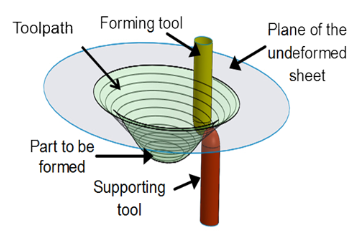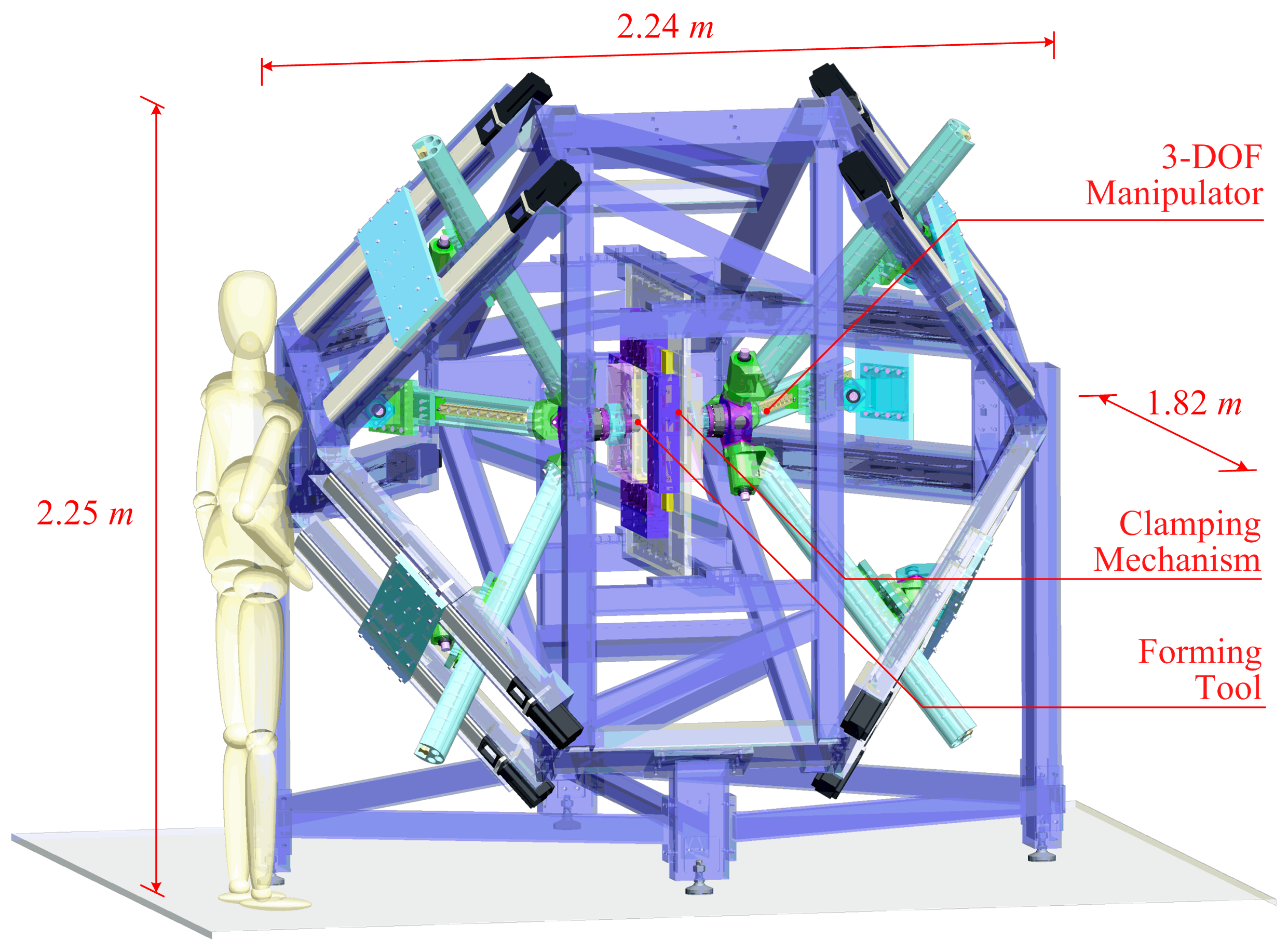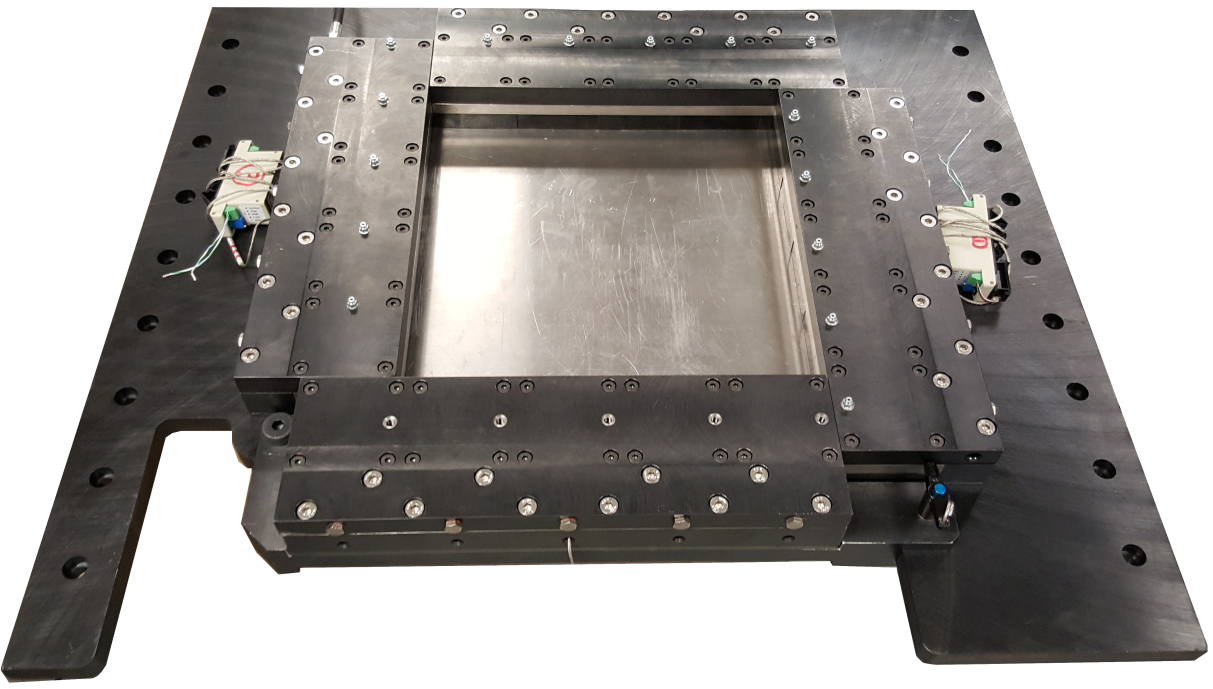Double-Sided Incremental Forming (DSIF) at Macro-scale - (DOE Project)
Double-Sided Incremental Forming (DSIF) is a new concept for sheet forming. A sheet blank is clamped around its periphery and gradually deformed to a complex 3D freeform part by two strategically aligned stylus-type tools that follow pre-described toolpaths. The two tools, one on each side of the blank, can form a part with both concave and convex shapes, and sharp features. Both the top and the bottom tools will each have three or up to six degrees of freedom (DOF). Their motions can be independently controlled or synchronized to achieve desired outcomes. Since deformation occurs locally, the forming force at any instant will be significantly decreased.
The key advantages of DSIF are its high process flexibility, high energy efficiency, low capital investment, and the elimination of the need for massive geometry specific dies and the associated energy and cost for casting and machining.
Schematic of DSIF process
The first generation of macro-scale DSIF machine has been built in the AMPL at NU. Two opposite x-y-z linear stages were designed to hold two forming tools. In order to increase the forming stiffness, accuracy and flexibility, the second generation of macro-scale DSIF machine will be built. A novel configuration of the parallel kinematic mechanism (named Tri-pyramid Robot) was designed for the new machine. Also, an adaptive clamping system was developed to implement a higher forming flexibility corresponding to the different toolpath strategies.
Prototype of Gen-1 macro-scale DSIF machine
Design of Gen-2 macro-scale DSIF machine
Prototype of adaptive clamping system
Geometric accuracy achievable in DSIF is significantly better than with any other form of incremental forming. Furthermore, the characteristic of the absence of any shape specific tooling is preserved. Additionally, the geometric complexity of components formable is significantly greater and the formability is also greater with DSIF. A custom made toolpath generation module for DSIF is developed in order to further investigate the DSIF process.
Enhanced complexity of components formed with DSIF
New toolpath strategy was used in forming simulation and applied for nearly vertical formed part
Sponsor
US Department of Energy (DE-EE0005764)






